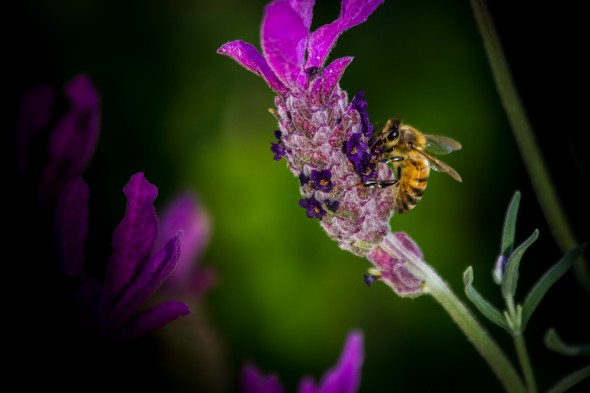TakePart | October 29, 2014
 How do you stop deadly bacteria from decimating beehives? Sic a self-replicating, bacteria-devouring virus on it.
How do you stop deadly bacteria from decimating beehives? Sic a self-replicating, bacteria-devouring virus on it.
That’s what a Brigham Young University research study claims, bringing hope that a natural cure for one of the honeybees’ deadliest killers is possible.
The disease, called American foulbrood, has infected between 3 percent and 15 percent of all honeybee colonies worldwide. The bacteria attack bee larvae, wiping out hives in the process.
Beekeepers have tried antibiotics on infected hives, but the disease can come back stronger and more resistant to the treatment. Some end up burning entire hives to keep the disease from spreading through a colony.
But BYU undergraduate student Bryan Merrill may be responsible for finding a new microscopic savior to swoop in and save the bees.
The natural treatment Merrill discovered involves unleashing a phage, or bacteria-eating virus, on the bee larvae. Once established, the virus attacks bacteria and self-replicates until the job is done.
Merrill took his phage research to BYU microbiology professor Sandra Burnett, who oversaw his work over the past three years. The results were published in the journal BMC Genomics.
“Phages are the most abundant life form on the planet, and each phage has a unique bacteria that it will attack,” Burnett said in a statement. “This makes phage an ideal treatment for bacterial disease because it can target specific bacteria while leaving all other cells alone.”
To date, they’ve identified five types of phages as good candidates for fighting American foulbrood. A “phage cocktail,” which combines four or five strains, is being considered by the United States Food and Drug Administration to prevent infection in beehives.
If commercialized, the product could save the honey industry hundreds of millions of dollars a year and keep antibiotic-ridden honey off the shelves.
“Right now for American foulbrood, we only have antibiotics to treat them, and they’re not working well,” Burnett said in an interview.
So far, the disease has shown resistance to oxytetracycline, the standard antibiotic treatment, and oxytetracycline’s replacement, Tylan, Burnett said. Both antibiotics are unsafe for human consumption, meaning children and pregnant women can’t eat honey from treated hives, she noted.
What makes phages unique is their ability to modify their structure in response to bacteria that try to survive by changing over time.
A phage can multiply itself, so there are more of them to hunt down the bacteria, Burnett explained, and as soon as the host bacteria are gone, the phages vanish from the hive.
She’d like to see a commercialized solution available for home beekeepers as well as for the industry.
“If you look at beehives, it’s a 50-50 split from hobbyist small-scale beekeepers and large-industry beekeepers,” Burnett said.
The researchers are in talks with some companies about putting a single-phage product on the market, but they said more research must be done to determine if using different combinations of phages in a cocktail could also be effective.
Photo of honey bee comb by Waugsberg via Wikimedia Commons
